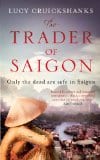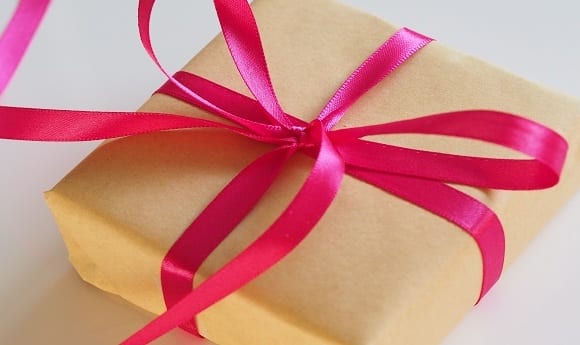Talking Location With … Emily Freud – THAILAND
Novel set in Vietnam (Suffering in Saigon (and Hanoi) + Author Q and A)
7th January 2013
The Trader of Saigon by Lucy Cruickshanks, novel set in Vietnam (Saigon and Hanoi).
 We were very pleased to add The Trader of Saigon by Lucy Cruickshanks to our database, as it ticks many of the boxes for us at TripFiction. A decent storyline that will be even better read in location. Set in Vietnam it is evocative of the country, whether strolling around Hoan Kiem Lake in Hanoi with Alexander and Hanh, or negotiating the bustling and roaring traffic of downtown Saigon, rushing through Cholon or navigating the square around Notre Dame Basilica. This is the 1980s when guns were still commonplace on the streets, lawlessness still affected thousands upon thousands, women were struggling to find their place under the new regime, and when everyone was coming to terms with the legacy of the war. Yet the book also has a tremendous resonance for Vietnam now.
We were very pleased to add The Trader of Saigon by Lucy Cruickshanks to our database, as it ticks many of the boxes for us at TripFiction. A decent storyline that will be even better read in location. Set in Vietnam it is evocative of the country, whether strolling around Hoan Kiem Lake in Hanoi with Alexander and Hanh, or negotiating the bustling and roaring traffic of downtown Saigon, rushing through Cholon or navigating the square around Notre Dame Basilica. This is the 1980s when guns were still commonplace on the streets, lawlessness still affected thousands upon thousands, women were struggling to find their place under the new regime, and when everyone was coming to terms with the legacy of the war. Yet the book also has a tremendous resonance for Vietnam now.
This is the story of three people and how their lives intertwine. Phuc, Hanh and Alexander all share a future that twists and turns like the alleyways of the Old Quarter in Hanoi.
The idea for the novel came to the author when she was on a flight between Singapore and Ho Chi Minh City in 2007, when she sat next a man who sold Asian brides.
The two locations of Hanoi and Saigon are really well drawn, sufficiently for readers to lose themselves in the descriptions of the frantic metropoles, balanced by more quiet, rural scenes. The title, therefore, feels a little misleading, as The Herder operates partly out of Hanoi, and Cheung Hu out of Saigon. Two cities, over 1000km apart, wonderfully depicted. Click on the cover to find out more about the novel
Over to author Lucy Cruickshanks who has agreed to answer some of our questions:
TF The inspiration for this novel came about when you were on a flight from Singapore to Ho Chi Minh City in 2007 and were sitting next to someone who you subsequently realised trafficked women. Tell us more.
LC Not quite! I met a man on a flight who said he sold Vietnamese brides. He described himself as a matchmaker; someone who helped aspirational young women find better lives with Chinese or Western men. He told me how desirable Asian women were – they were loyal, obedient and hard working – and how he was doing them a service by helping them to find love. He was incredibly proud of how rich this had made him. I was shocked by his arrogance and flippancy, but utterly fascinated.
I took his card and after the flight, I looked him up. His business was licenced by the government of Singapore and apparently operated entirely within the realms of the law. I started to look too, however, at the Asian marriage industry in general. It didn’t take much to see that whilst some genuine matchmakers do exist, many more ‘legal’ companies are fronts for traffickers; groups that mislead, coerce or kidnap women and girls and sell them into forced marriage, prostitution and slavery.
The man on the flight may or may not have been involved in trafficking, but he made me think hard about where the line between matchmaking and trafficking lies – and who draws it. The social, political and cultural factors that lead women to consent to be sold as brides are often the very same factors that leave them vulnerable to trafficking. Our conversation became the basis for The Trader of Saigon.
TF How did you go about researching the novel?
LC I’d been to Vietnam before, so the first step of research was to remember what I seen there. To get the sense of place, I started by picking apart my travel photos, using them to remind me of how the country looked, sounded, smelled and tasted. I didn’t go back to Vietnam until I’d finished the first draft, and revisiting then became an exercise in verifying what I’d already written, and layering up the details to really bring the setting to life.
To grasp the political and social context, I read voraciously. It’s not too hard to research facts and figures, but to understand and then capture how people felt is much less easy. I turned to novels by Duong Thu Huong and Bao Ninh, amongst others, to help me make sure I didn’t filter my characters through a naïve and sanitised Western perspective. I also spent time with a British diplomat who was posted in Hanoi at the time the novel is set, which helped me greatly.
Researching human trafficking was continually jaw-dropping. To Google ‘Asian Brides’ and simply follow where it led me – click by click, deeper and deeper into the warren of websites – was truly remarkable, and thoroughly depressing.
TF How did you decide on the names of your characters?
LC When naming Alexander, I wanted something that I felt would let him pass easily as an American and a Russian. This needed to be the case for the sake of the plot, but having a name that isn’t immediately associated with a specific country also reflects the rootlessness of his personality. ‘Alexander’ turned up as a pretty quick and pragmatic choice that I thought I’d perhaps revisit, but the longer I lived with him, the more it seemed to fit.
For the Vietnamese names, I looked for meanings which worked in the context of the novel. Phuc (pronounced Fook) means ‘good luck’, which I thought added a wonderful irony to his woes. Hanh (pronounced Hang) means ‘faith’. Above all – since the context of the novel is so bleak – I wanted her character to be hopeful.
TF You clearly know Vietnam very well. Tell us a bit about your travels and your favourite places.
LC My favourite place in Vietnam is easily Hanoi. It’s such an energetic city – probably my favourite in Asia – and the Old Quarter has endless charm and intrigue to spark the imagination. When I was researching Trader, I spent days sitting in Hanoi’s open-front cafes and watching the world go by. That’s the beauty of revisiting a country. You don’t feel obliged to ‘see the sights’ and can slow down, just sit, observe and absorb it.
Elsewhere in Vietnam, I found Hue fascinating. It was the place where the ferocity of the American War – and how recent it was – really hit home. Being able to touch the bullet holes in walls on almost every street and meeting US war veterans who were returning as tourists for the first time was incredibly sobering.
Even putting Vietnam aside, I have a real love affair with Asia. For me, the point of travelling is to have experiences that are different from those I’ll get at home; where I’ll meet different people, learn something new, or be surprised. Places with strong political, social or cultural context excite and inspire me – they are always so full of stories – and Asia provides these things by the bucket-load. There’s so much variety. My favourite places seem to change each time I’m asked, but highlights include the temples at Bagan, the food halls in Hong Kong, and the view from the top of Mount Kinabalu.
TF How did you first come to writing?
LC My husband bullied me into it. Like many people, I suspect, I had been saying ‘I want to write a novel’ for as long as I could remember, but without ever picking up a pen. I think I assumed that writing was something you did when you were all grown up; when you’d had a ‘proper’ job for thirty years and had time on your hands to be selfish and frivolous! When I couldn’t find a proper job I loved, my husband encouraged me to look at writing differently and to see that it could be my career if I stopped procrastinating, took a risk and actually wrote something. I quit my job, enrolled on the MA in Creative Writing at Bath Spa University and gave myself a year to write a novel and get a publishing deal. Of course, this was wildly optimistic, but at the end of the year the ball was rolling quick enough that I didn’t want to let it stop.
TF What are you working on at the moment? And will it have a strong location?
LC My second novel is a thriller set against the backdrop of the ruby trade in 1980s Burma (now Myanmar). It looks at how the battle between the ruling military junta and ethnic insurgent armies for control of gem mines impacted ordinary lives, following three characters as they navigate through the precariousness of a society suffering from dictatorship and civil war.
Location plays as important a role in this novel as it does in Trader; the story I’m writing could not take place anywhere else. Around 90% of the world’s rubies come from Burma and most of these are from a single region, where the novel is set. Government legislation means the area has been completely off-limits to foreigners for years (and to many Burmese), so research has been a challenge. Although I’ve been to Myanmar, I was unable to get there, so I’m relying heavily on books, photographs and stories from the few people I can find who have been lucky enough to visit. I’m filling the gaps with imagination.
I think the key to making any location authentic is to identify the elements that make it unique, and then reflect these in your writing. The strength of Buddhist belief, for example, and the prevalence of government surveillance are two prominent characteristics I’ve needed to consider, but the ruby trade and its role in the civil war is what makes this story uniquely Burmese.
Thanks to Lucy and you can follow her on Twitter and on her website.
You can catch up with us at TripFiction on Twitter, Facebook and Pinterest and when we have some interesting photos we can sometimes be found over in Instagram too.

 Please wait...
Please wait...
